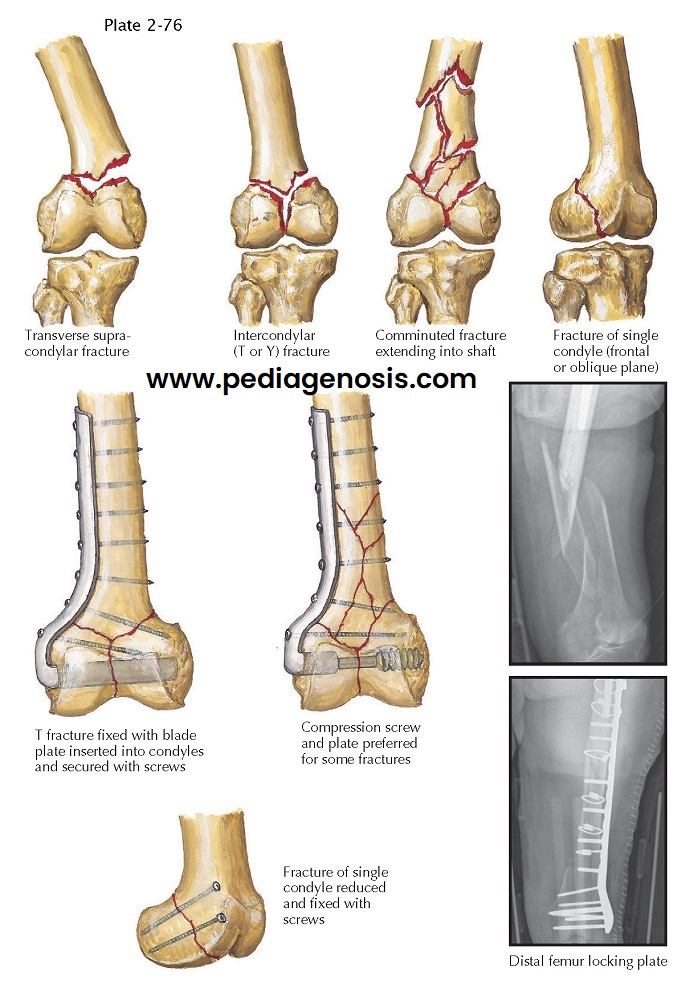FRACTURE OF DISTAL FEMUR
Fractures of the
distal femur are generally divided into two groups: those that involve the
joint surface and those that do not. As with any intra-articular fracture,
those of the distal femur can lead to significant post-traumatic osteoarthritis
if the reduction and fixation of the intra-articular aspect of the fracture is
not satisfactory.
The many different fracture patterns that occur in the distal femur range from the fracture type that does not involve the joint surface to the type with severe comminution of both the intra-articular and extra-articular components.
Fractures with joint involvement require treatment
with ORIF, first to achieve secure fixation of the intra-articular fragments,
then to join them to the intact distal femur. Intra-articular fractures are
usually treated with a blade plate supracondylar screw plate or locking
periarticular plate. The success of treatment with these devices depends on a
meticulous surgical technique and the availability of sufficiently strong bone
for fixation. The same problems of implant failure or fixation that occur in
the treatment of subtrochanteric fractures can also complicate the treatment of
the distal femur. In areas of marked
metaphyseal comminution, bone grafting medially may help prevent late failure
of the plate device.
Fractures of the distal femur that involve a single
condyle may be stabilized securely with single lag screws or lag screws with a
buttress plate. This technique allows early motion with minimal risk of
displacement at the joint surface.
Extra-articular fractures of the knee at the
metadiaphyseal junction or more proximal are amenable to a retrograde
intramedullary nail.
Rehabilitation after ORIF is based on the security of the fixation and the quality of the bone. As clinical and radiographic examinations document healing, the patient is allowed to increase weight bearing on the injured extremity.





